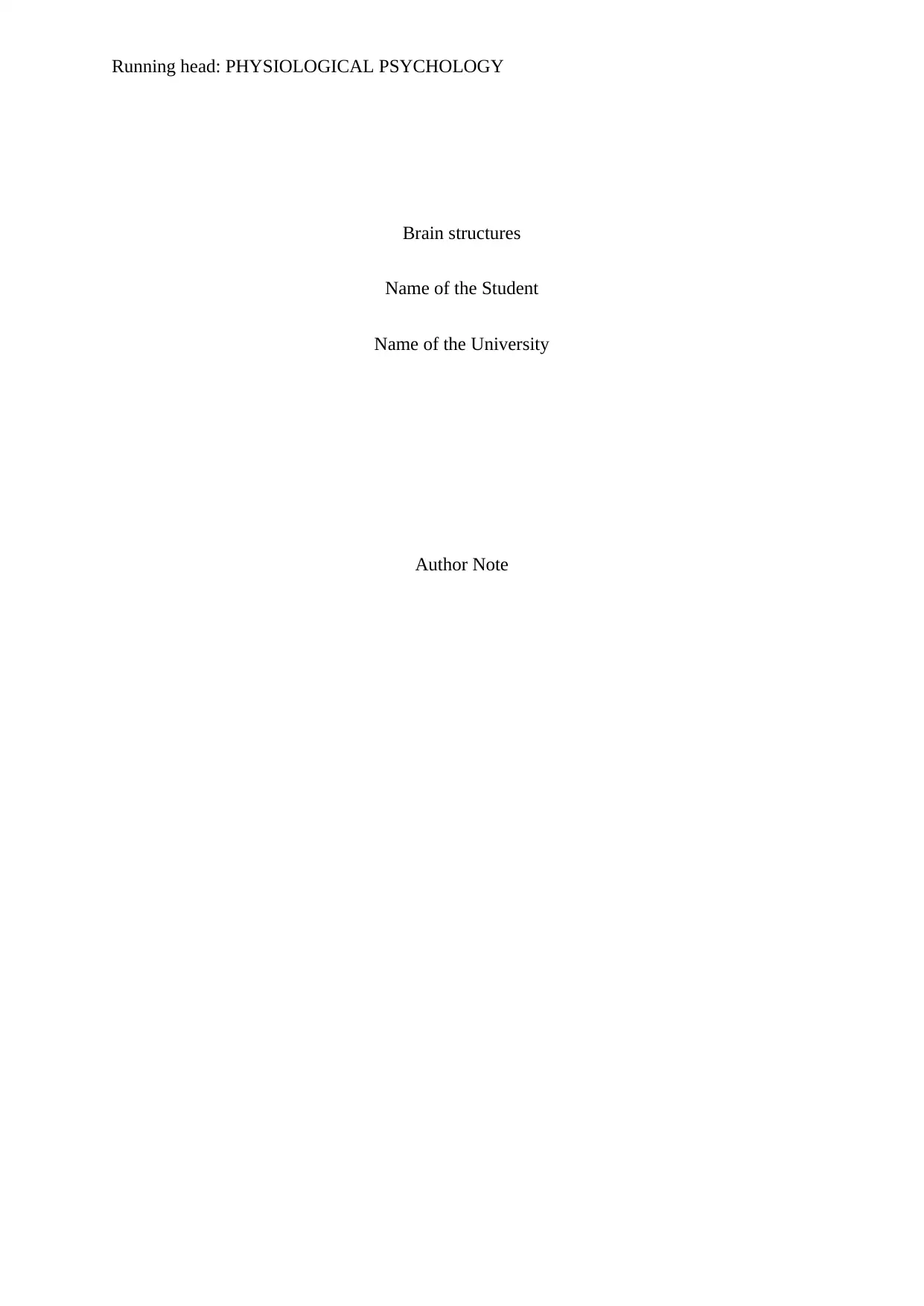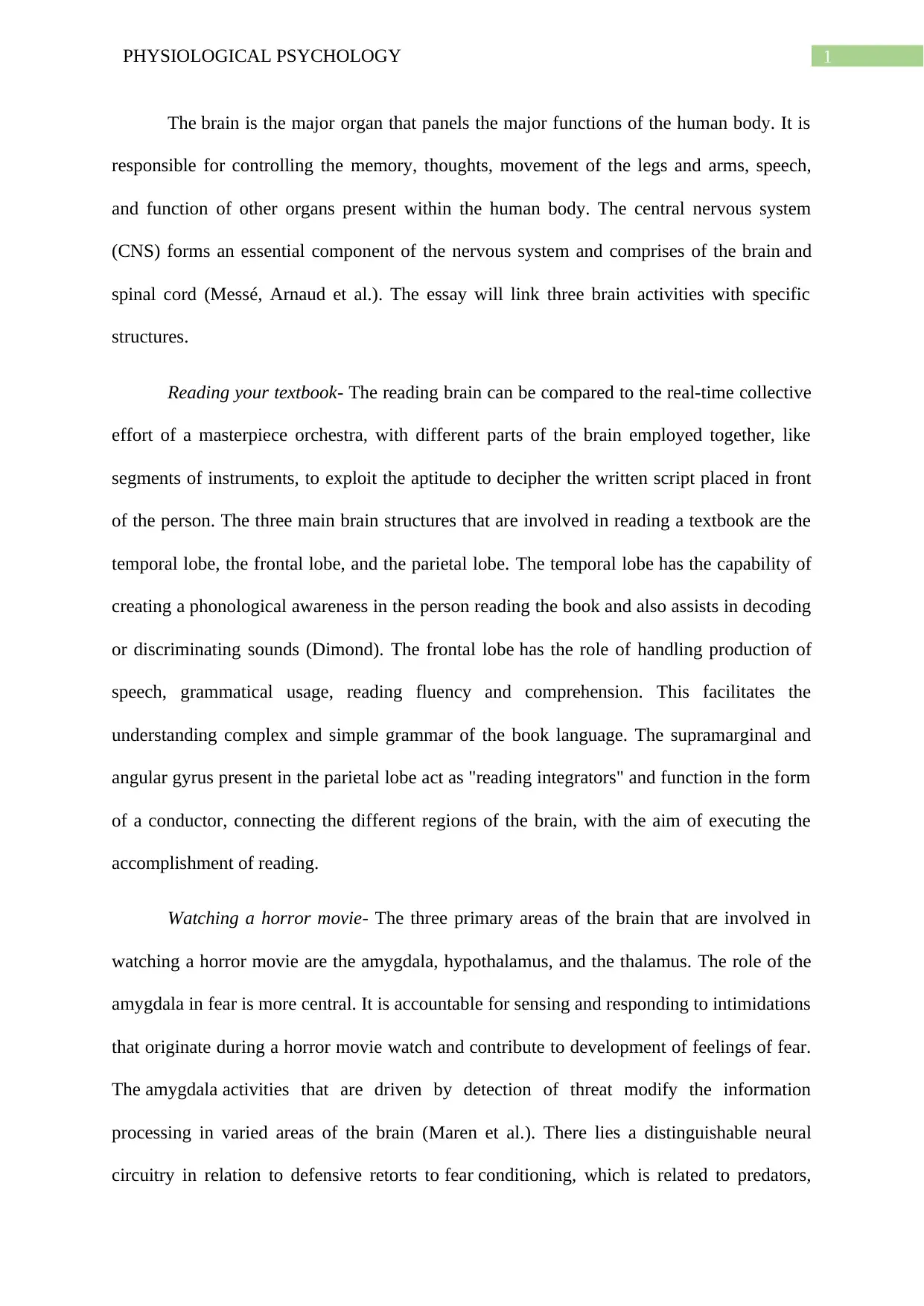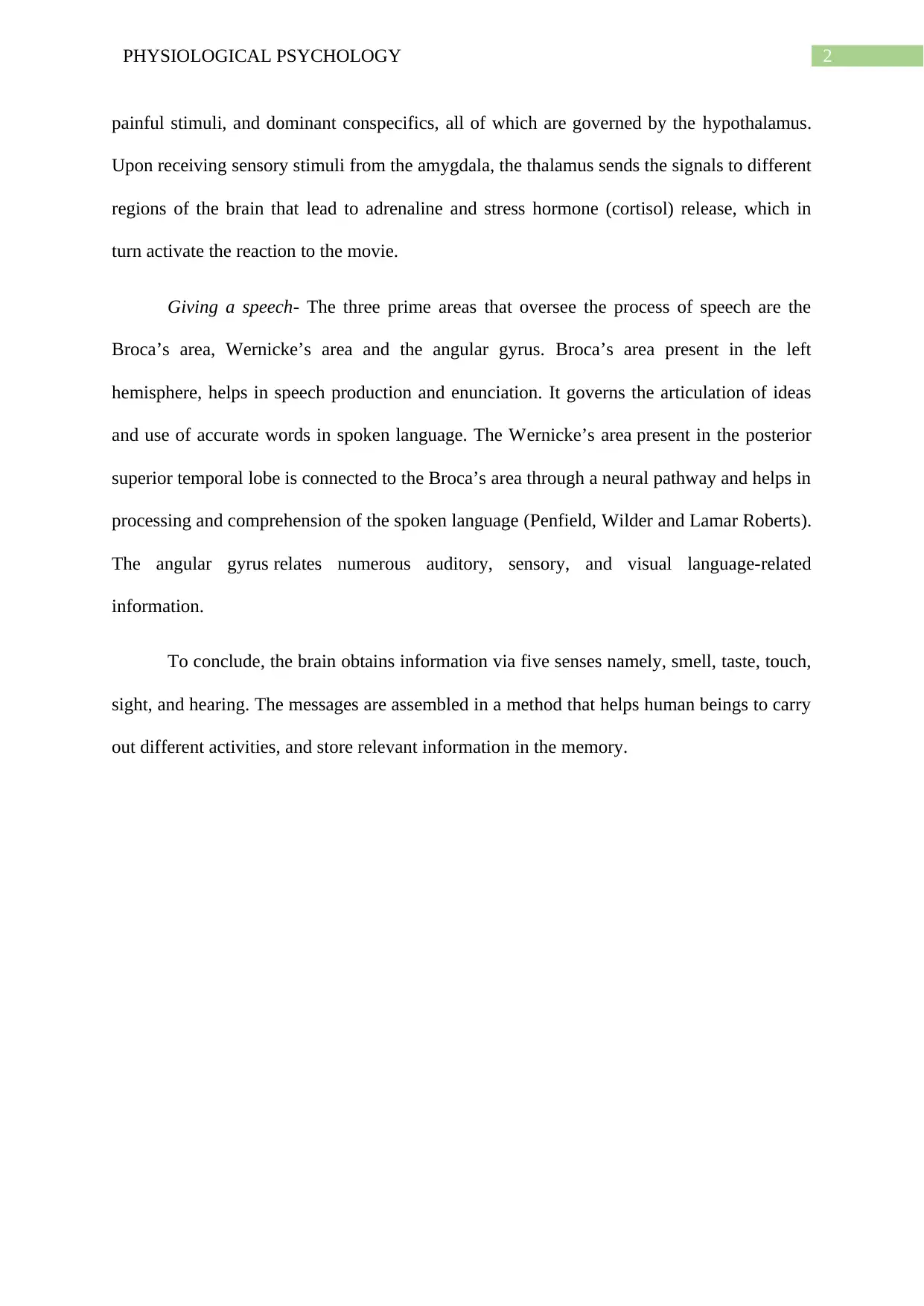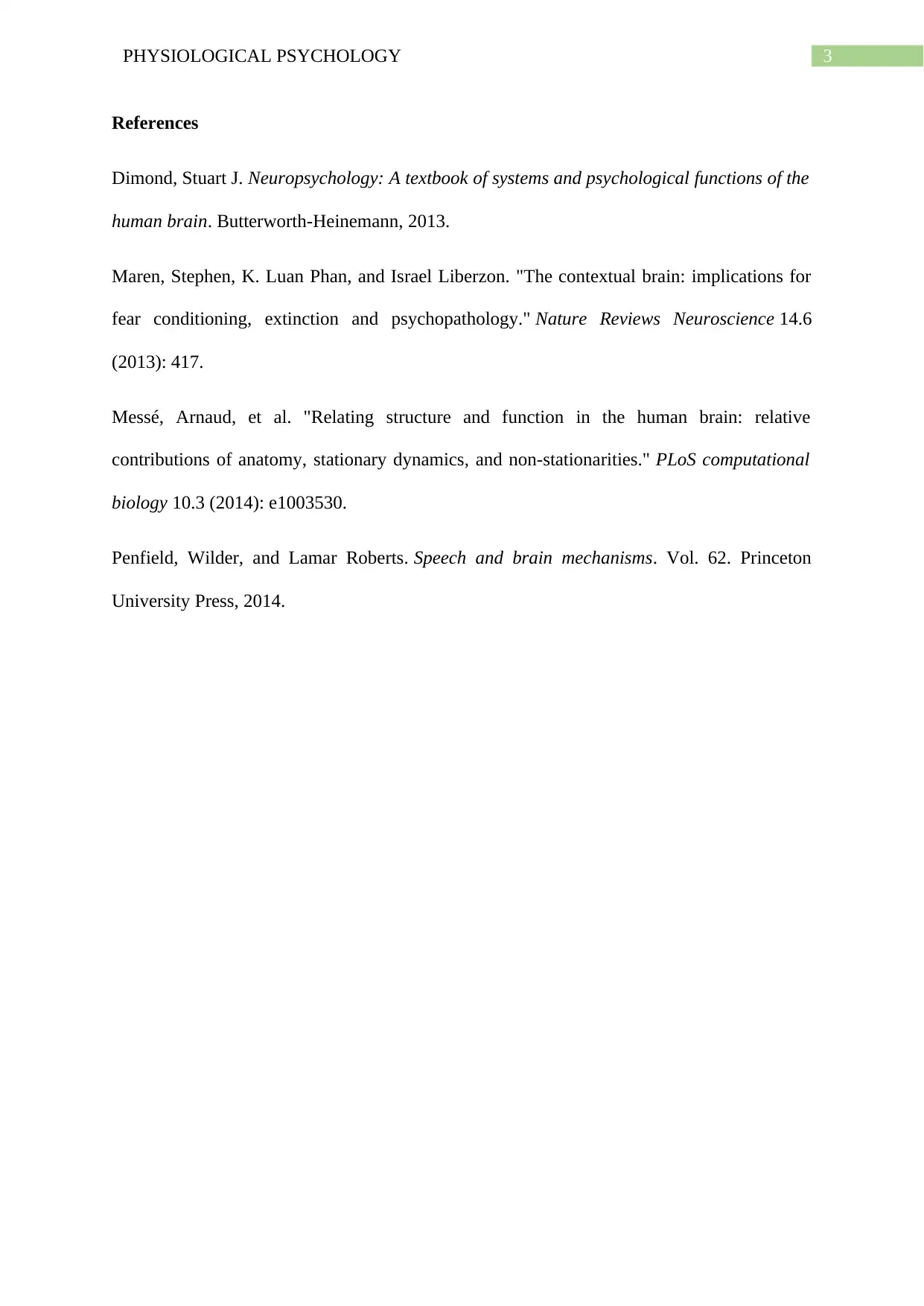Exploring Brain Activities and Structures in Physiological Psychology
VerifiedAdded on 2023/06/05
|4
|751
|339
Essay
AI Summary
This essay delves into the intricate relationship between brain activities and specific brain structures within the realm of physiological psychology. It examines how the temporal, frontal, and parietal lobes collaborate during reading, with the temporal lobe facilitating phonological awareness, the frontal lobe managing speech production and grammar, and the parietal lobe integrating different brain regions. Furthermore, it explores the amygdala, hypothalamus, and thalamus's roles in processing fear when watching horror movies, detailing how the amygdala senses threats, the hypothalamus governs defensive responses, and the thalamus relays signals leading to adrenaline release. Lastly, the essay discusses the Broca's area, Wernicke's area, and angular gyrus's involvement in speech, highlighting Broca's area for speech production, Wernicke's area for language comprehension, and the angular gyrus for integrating language-related information. The essay concludes by emphasizing the brain's role in processing sensory information and enabling various human activities.
1 out of 4






![[object Object]](/_next/static/media/star-bottom.7253800d.svg)